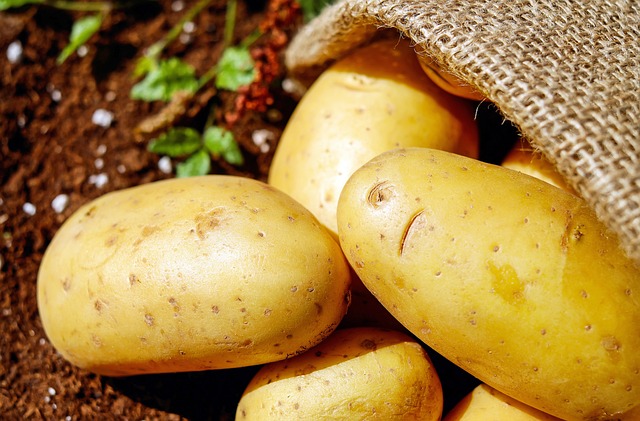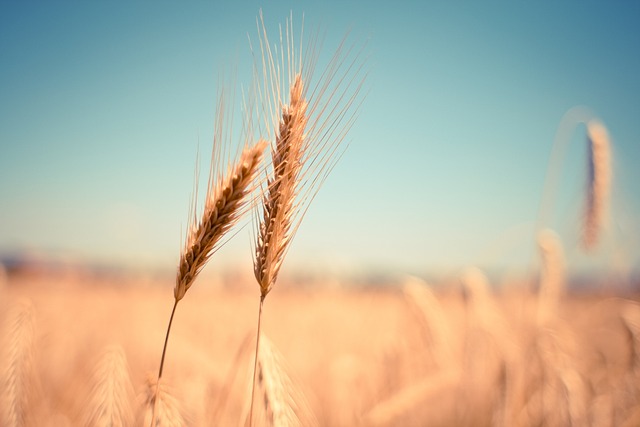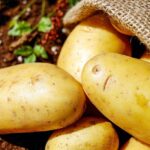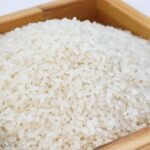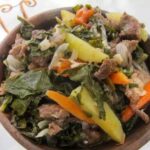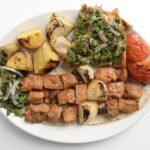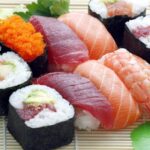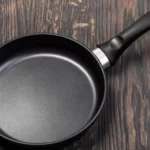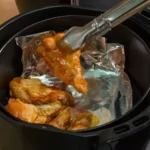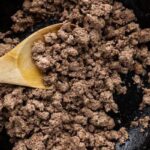Is Freeze Dried Food Healthy? All You Want to Know
Food that has been freeze-dried is just as nutritious as food that has been consumed fresh. Foods that have been freeze-dried retain 97% of their original nutritional value. One of the best methods for keeping food fresh while preserving its maximum nutritional value is freeze drying.
However, because some nutrients are depleted during processing, freeze-dried foods aren’t always as healthy as fresh foods. One of the more intriguing aspects of freeze-dried foods, like berries, may be their potential to help with disease prevention, even though many of the nutritional advantages are still preserved.
However, what are the pros and cons of freeze dried food? Which food that can be freeze-dried? Continue reading.
Table of Contents
What is Freeze-Drying Food?
Because mountain people used to leave produce out in locations where the combination of cold temperatures and high altitudes (lower pressure) allowed the water in the food to freeze, then sublimate, or change from ice to evaporated gas without passing through the liquid form, food has been freeze-dried for a very long time—possibly over a thousand years. Low water content food would be much lighter, keep its original appearance (especially in terms of colors and nutritional content), and last a lot longer.
Modern freeze-drying starts with frozen produce and places it in a sizable vacuum chamber where the frozen water inside the food sublimates under carefully controlled conditions, much like supermarket freezers. The end product is portable, retains its original colors and flavors, won’t spoil for years, and, most importantly, miraculously retains all of its macronutrients, micronutrients (vitamins and minerals), and phytonutrients. Studies have shown that freeze-dried foods frequently retain over 90% of the nutrients of the original fresh food, in contrast to other drying techniques (air-drying, heat-drying), which typically damage phytonutrients and micronutrients as evidenced by the obvious changes in food color.
In order for foods that are freeze-dried to have a better flavor and more nutrients, they are also first harvested at the height of ripeness. However, most “fresh” produce from the grocery store is actually picked too early, artificially ripened, and depleted of up to 50% of its nutritional value while refrigerated.
Is Freeze Dried Food Healthy?
At the Medical College of Wisconsin, professor of medicine Gary Stoner found that the freeze-dried berries retained 90% of the anthocyanins, which give berries their color and are thought to prevent cancer. Vitamins C and E, folic acid, and other nutrients are somewhat depleted during the freeze-drying process. The nutritional value of freeze-dried food is comparable to that of fresh food after it has been rehydrated, claims Diane Barrett, a professor of food science and technology at UC-Davis. One of the best ways to preserve food, in Barrett’s opinion, is freeze-drying. Freeze-dried food has long been a favorite among outdoor enthusiasts and patrons of sporting goods stores like REI, which sells small, lightweight packets for hiking and backpacking.
Why is Freeze Dried Food Good for You?
In contrast to other methods of food preservation like canning, which only retains 40% of the nutrients, and dehydrating, which only retains 60%, freeze drying preserves 97% of the nutrients.
Freeze drying keeps a significant amount of the original flavor and texture when it is rehydrated. Freeze-dried foods don’t lose any volume. Furthermore, it does not make food tough.
Food that has been freeze-dried has a shelf life of 10 to 25 years when properly stored. Up to 20 years longer than other preservation methods like canning, dehydration, or freezing, each of which has a three-year shelf life.
Freeze drying is an established technique. Since 1906, and has been enhanced over time to preserve food’s flavor and maintain its ideal nutritional level.
Foods that have been freeze-dried hardly ever contain any additives or preservatives. When food is frozen dried, real foods and ingredients are used.
Fruits and candies, for instance, can be consumed without being rehydrated and are frequently preferred to do so while maintaining the same nutritional value.
Frozen-dried fruits and vegetables might be more nutrient-dense than their fresh counterparts. Because they were picked before they were fully ripe and had to travel for days or even weeks to the store while rapidly losing their nutritional value, fresh fruits and vegetables from the grocery store are frequently less nutrient-dense than those picked at the height of ripeness during their harvest season.
This enables you to consume healthy fruits and vegetables all year round, regardless of whether they are in season or not.
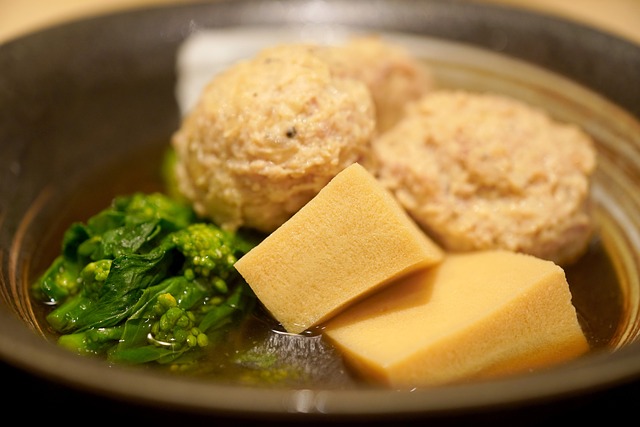
The Advantages of Freeze Dried Food
- Preserving and storing more food items – Fruits and vegetables benefit greatly from freeze drying, but unlike other methods, it also successfully preserves meat, fish, dairy products, eggs, candy, Skittles, ice cream, and even fully prepared meals. A benefit of freeze drying is that it can preserve the majority of foods.
- Longer shelf life – One of the main benefits of freeze-drying food is that it can be kept at room temperature for up to 25 years in a sealed mylar bag, jar, or food-grade bucket.
- Nutritional value – Foods that have been freeze-dried retain 97% of their nutritional value. Other food preservation techniques, like canning and dehydrating, use higher temperatures that reduce the food’s nutritional value.
- Taste – Foods that have been freeze-dried rehydrate more completely than food that has been dehydrated, so the taste and texture of the freeze-dried food is more similar to that of fresh food. This also implies that you can successfully rehydrate foods that have been freeze-dried and use them as ingredients in regular cooking.
- Freeze drying candy including skittles, gummy bears, and much more. But jam, honey, syrup, and pure chocolate don’t freeze-dry well.
The Disadvantages of Freeze Dried Food
- Cost /Expensive – Due to the specialized equipment required, the biggest drawback of freeze dried food is that it is more expensive to purchase than non-freeze dried items. It can sometimes cost up to five times as much. A home freeze dryer costs a lot to purchase, with the smaller machines starting at more than $2,000 in price. However, if used frequently, the cost can be reduced over time.
- Water is necessary for reconstitution (aside from simple snacks).
- Some people find the dry texture unpleasant.
- Not every food can be frozen and dried.
Foods That Can Be Freeze-dried
In space exploration, hiking, camping, emergency preparedness, and military rations, freeze-dried foods are frequently used. Because of their portability, ease of preparation, light weight, and long shelf life, they are preferred over traditional foods.
Although the majority of freeze-dried products are made from plants, many different types of foods can be preserved this way.
Here’s a list of some of the foods that can be freeze-dried:
- Fruits: strawberries, apples, blackberries, bananas, pears, oranges, and fruit puree
- Vegetables: almost all vegetables, such as carrots, asparagus, mushrooms, peppers, pumpkin, and tomatoes
- Meats: beef, fish, chicken, eggs, pork, turkey, and shrimp
- Grains: rice, beans, pasta, quinoa, and polenta
- Frozen meals: whole meals like Pad Thai, stews, chili, and snacks
- Beverages: milk, juices, coffee, and tea for instant drinks
- Spices: ginger, oregano, mint, basil, and garlic
- Sweeteners: maple syrup for sugar powder
Can You Freeze-dry Foods at Home?
Equipment that is specialized, frequently expensive, and that operates at a particular temperature and pressure is needed for freeze-drying.
If you don’t want to make the investment in a home freeze-drying machine, you can still freeze-dry foods at home by using the freezer method.
The steps for using the freezer method are listed below. Despite not requiring any specialized tools, it takes the longest.
- Cook the food, dry it off if necessary, and wash it.
- Cut it as evenly and into 1-inch squares as you like. Large food pieces should be kept to a minimum.
- Put the food on a tray in one layer, then put the tray in your freezer. Foods in the freezer must be properly freeze-dried for about a week.
- Take a piece out of the freezer and let it thaw to check the quality of your food. The process is finished when it reaches its natural or typical color. However, if the food turns black or dark brown after thawing, it hasn’t been completely freeze-dried.
- Frozen foods should be kept in airtight containers.
Do Foods That Are Freeze Dried Retain Or Lose Their Nutritional Value?
Only 3% of the nutrients in food that has been freeze dried are lost, while 97% are retained. Compared to other methods of food preservation, freeze drying does a much better job of maintaining a food’s nutritional value. High temperature food preservation methods like dehydrating and canning both result in nutrient losses of about 60% and 40%, respectively.
Which type of food is better: freeze-dried or dehydrated?
Freeze drying is preferable to dehydrating for food preservation because it removes more moisture (lengthening the food’s shelf life) and retains a much higher percentage of the food’s original nutrients. Dehydrated foods typically last one to two years, while freeze-dried foods last 10 to 25 years. However, for those on a tight budget who don’t have room for many freeze-dried foods, it might be preferable to dehydrate food at a lower cost so they can have access to more food in emergency-type situations.
How Are Nutrients Maintained During Freeze Drying?
Fresh food that has been freeze dried quickly turns into frozen food while maintaining all of its vitamins and nutrients. During the freeze-drying procedure, very little heat is used. A lot of heat is used during dehydration and canning, which helps the food release more vitamins and minerals, respectively.
Freeze drying maintains the food’s vitamins, nutrients, and flavor because the food is quickly frozen. On the day they were freeze dried, foods can still be savory and nutrient-dense. The majority of the nutritional value and flavor-enhancing sugar in food that has been freeze-dried are retained. As a result, the sugar content of freeze-dried foods will typically be higher than that of dehydrated foods.
Freeze Drying: Does It Remove Sugar?
By using freeze drying, the sugar content is not changed. However, there are other aspects that contribute to a food’s healthfulness besides its sugar content. It’s important to consider portion size and additional nutrients. Freeze drying doesn’t deplete foods of as many nutrients as drying or canning does. As a result, while freeze-dried fruits may have more sugar than canned or dried foods, they also have significantly more nutrients overall.
It may be preferable to freeze dry fruits and vegetables rather than can them because it locks in a lot more nutrients than other methods of food preservation.
Are Bacteria Killed When Food is Freeze-dried?
Drying food in the freezer does not kill bacteria.
When food is frozen dried, bacteria do not perish. Because freeze drying is not a method for ensuring the safety of food, bacteria and other microorganisms may remain alive and dormant after the process. Before you freeze dry food, it must first be handled and cleaned properly.
Raw food that has been freeze-dried at home retains living bacteria, which will reactivate upon rehydration. All foods, even those that are freeze-dried, must be cooked before eating. Among them are foods made with raw ingredients, raw eggs, raw meats, and raw foods.
Do Freeze Dried Fruits Still Have Nutrients?
Fruit that has been freeze dried retains the majority of its nutritional value and is almost as healthy as it was before. Compared to fresh fruits that have been harvested and then left unattended or in the refrigerator for an extended period of time, freeze-dried fruit can retain more nutrients. Fruit that has been freeze dried to lock in all of its nutrients can retain up to 97% of its original nutrients when it is picked in season.
Conclusion
Freeze-drying, also referred to as sublimation, is a method of dehydrating frozen food that turns ice into vapor.
It is a nutritious method of food preservation because it preserves the majority of the foods’ healthy plant compounds and nutrients, as well as their color, taste, and appearance.
It does not, however, eradicate harmful bacteria. In order to freeze-dry raw foods, you must first cook them.
In the event that you do not have a home freeze-drying machine, you can easily freeze-dry your own food at home using your freezer.
Read about Is Dehydrated Food Healthy?


